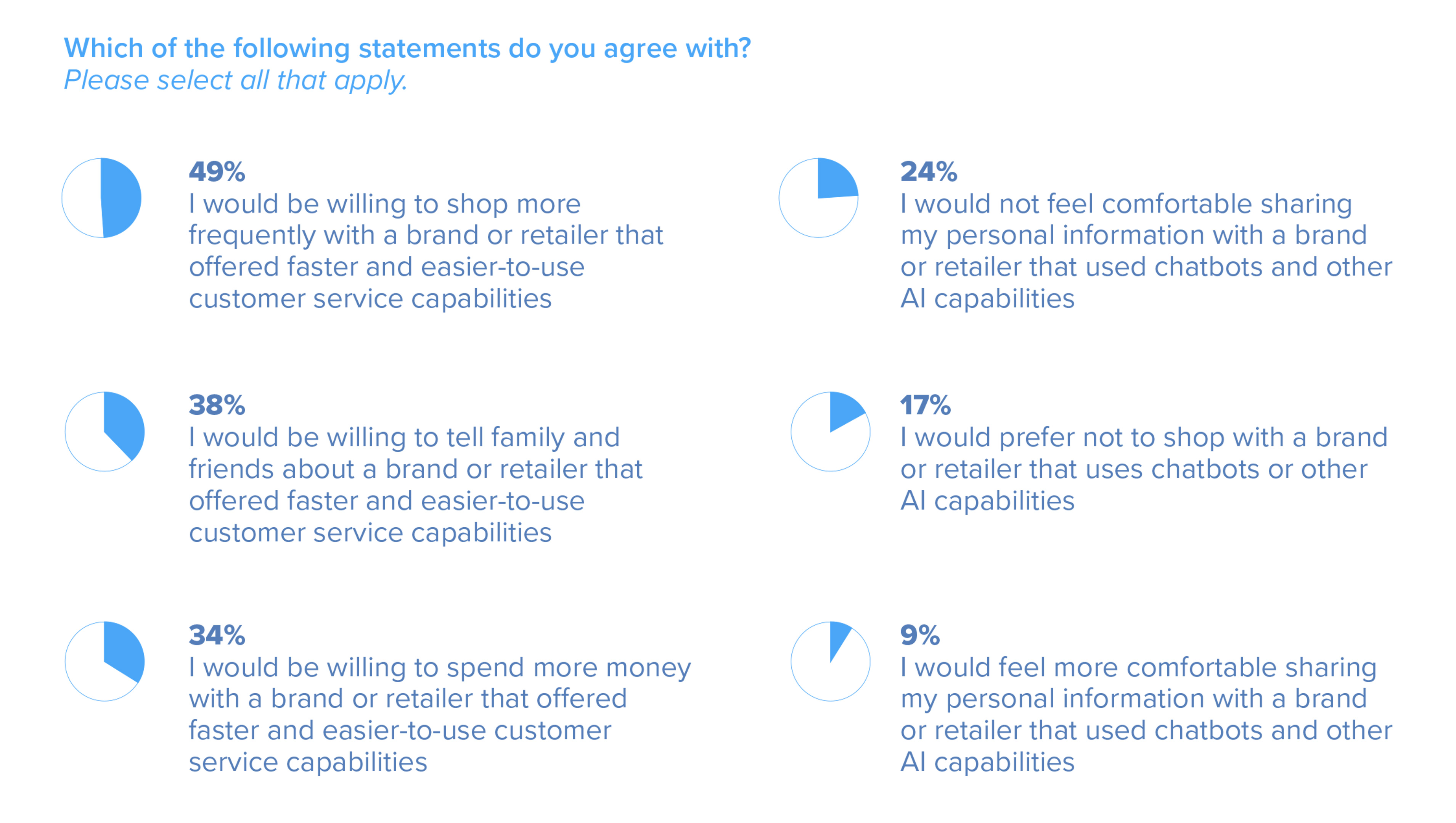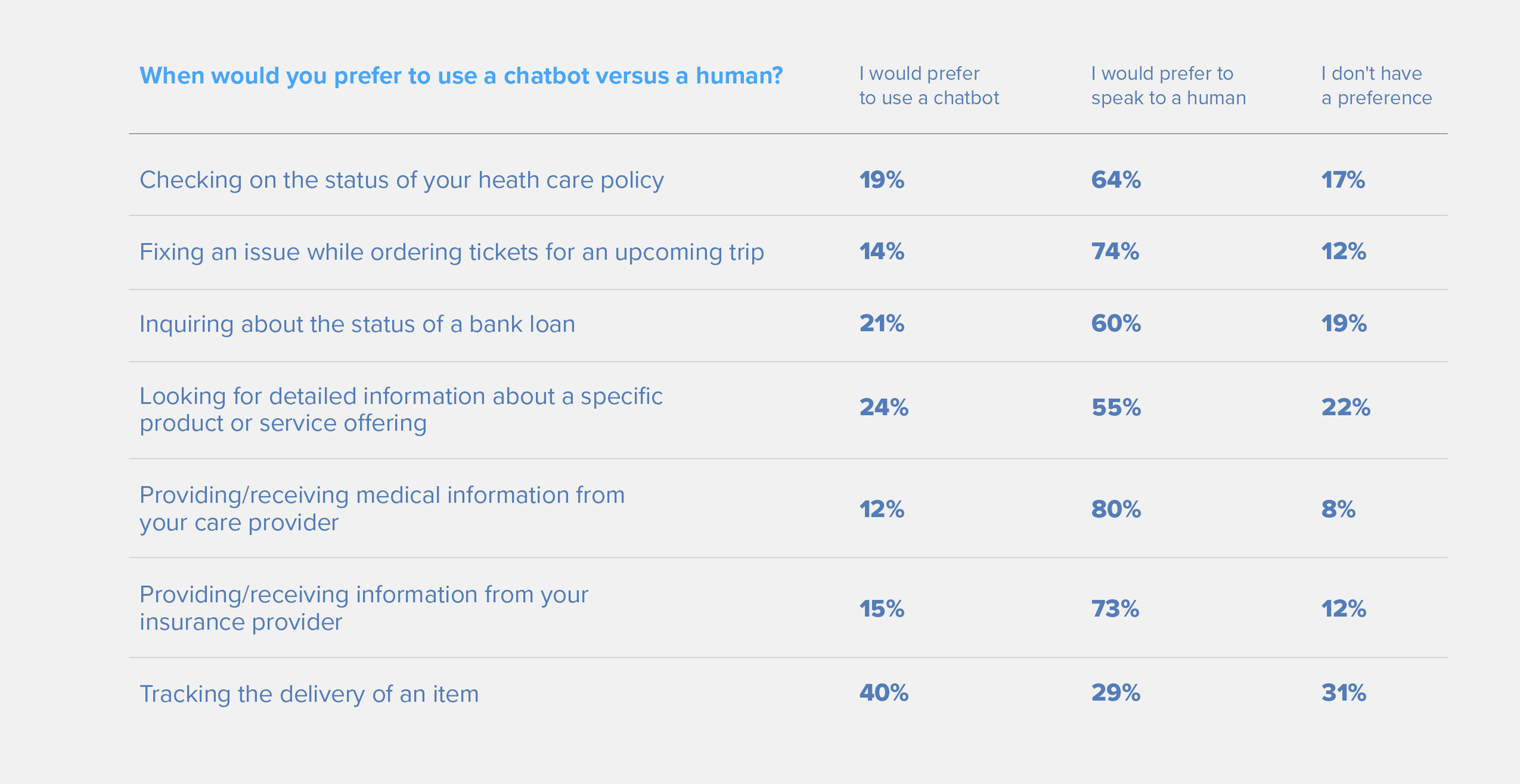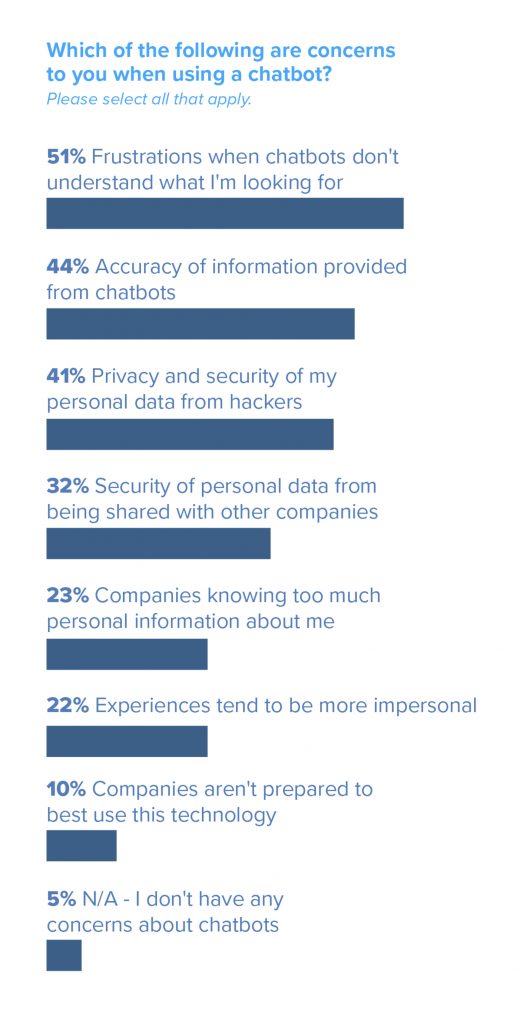Businesses Should Look For Opportunities to Bridge The Gap Between Consumers and Greater Chatbot Understanding ‒ Those Who Do Will Reap The Reward, says PointSource
AI’s most popular application to date – chatbots – are everywhere these days. Chances are you have interacted with them while banking, shopping or trying to find the best insurance for your car. Now that brands are convinced about using chatbots, they hope consumers as kicked. PointSource‘s report ‘Finding Common Ground Between Consumers And Artificial Intelligence’ throws light on what consumers think about their interactions with AI and what brands are doing wrong.
By 2020, Gartner estimates that chatbots will be handling 85 percent of customer service interactions. And by 2022, Juniper Research estimates chatbots will be contributing to over $8 billion in annual cost savings. Tech giants are currently the driving force behind what AI-powered experiences look like, prioritizing calls for streamlined and faster interactions. However, with Constellation expecting the AI market to surpass $100 billion by 2025, the technology is primed to help all businesses address the ever-changing needs of 21st-century consumers, regardless of their existing digital capabilities. But how do consumers feel?
Excited But Scared
To date, consumers’ excitement about a future where Artificial Intelligence plays a larger role only slightly outweighs their worries. AI adoption sits at a critical turning point, and it’s up to brands to develop customer experiences that highlight the technology’s strengths and safeguard consumers against its potential pitfalls. The first order of business on the path to valuable AI touch points is demystification. How do consumers really feel about chatbots? What do valuable AI-powered experiences look like from their perspective? As businesses answer questions like these, they’ll find it easier to improve their existing AI interactions and to seed new innovations in ways that make sense for their unique business goals and experiences.

To date, just 43 percent of consumers say they’ve interacted with a chatbot in the past year. However, considering that Oracle finds that 80 percent of businesses hope to implement chatbots by 2020, if that interaction number is not already much higher, we can expect it to be in the near future.
Well-executed chatbots are not the implementations that people notice or remember. It’s the poorly executed ones that leave a bad taste in consumers’ mouths.
Read More: Why Every Marketer Needs To Focus On Conversations In 2018
What’s Holding Consumer’s Back?
While 90 percent of consumers feel that companies are prepared to best use chatbots, over half (54 percent) would still prefer to talk to a customer service representative. It seems that trust in an organization has yet to transfer to the technologies at its disposal, despite the fact that decision makers are adding chatbot solutions to first-and-foremost improve consumers’ experiences.
To push chatbots beyond their current adoption hump, businesses must take stock of their target audiences and analyze users’ relationships with AI.
This means both what users find attractive about AI, and what’s turning them off. Uncovering insights like these through additional customer research is the single best way to find AI’s new opportunities and to chip away at its biggest potential barriers.

We spoke to Greg Ng, VP of Digital Engagement at PointSource, a Globant Company about how to get consumers and chatbots to get along.
MTS: Are there certain industries that have adopted chatbots sooner than others?
Greg: Today an increasing number of businesses across different verticals are leveraging chatbots. In fact, we found 43 percent of consumers have interacted with a chatbot in the past year, and another 23 percent said they aren’t sure if they have ‒ indicating chatbot adoption may be more widespread than we think.
In particular, consumers have really embraced chatbots in the retail industry. Our study found that consumers are open to chatbots in retail interactions throughout the majority of the customer journey, preferring to use them instead of humans when looking for product information online (34 percent), looking for pricing information or discounts online (36 percent), checking to see if an item is in stock (38 percent), searching for delivery information (36 percent) and tracking the delivery of an item (39 percent).

However, consumer comfortability with chatbot assistance significantly drops off for more complicated, high-stake retail interactions. Eighty percent of consumers prefer to speak with a human when resolving problems post-purchase, and another 71 percent want the human element during the in-store experience.
The financial services industry has also been quick to integrate chatbots, but retail consumer preferences bleed into insurance interactions, too. Insurance policyholders are most open to the idea of chatbots facilitating simple and routine activities like policy reminders (36 percent) or checking the status of a claim (29 percent). However, users still prefer the human touch when dealing with more sensitive needs. Three-fourths (77 percent) of respondents seeking out healthcare advice want to talk to a human, and 67 percent feel similarly about submitting a claim.

To push chatbots beyond their use-case limitations, business must take stock of their target audiences and analyze users’ relationships with AI ‒ what they find attractive and what’s turning them off. Uncovering insights like these through additional customer research is the single best way to find AI’s new opportunities and to chip away at its biggest potential barriers.
MTS: Usually, we consider first movers to adapt technology as occupying a position of advantage. Have there been instances where consumers have been alienated by technology that is too new for comfort?
Greg: The challenge organizations face today with integrating new technology is understanding how to seamlessly fit it in to their customers’ lives. The current state of chatbots is a prime example of this. Forward-thinking decision makers are adding chatbot solutions with the goal of improving consumers’ experiences, yet consumers still aren’t completely seeing that end result. Case in point, we found that 90 percent of consumers feel that companies are prepared to best use chatbots, yet over half (54 percent) still want to talk to a customer service representative. While businesses have consumers’ best interest in mind, consumers aren’t going to embrace chatbots if they don’t comfortably solve their needs.
However, we found there are several opportunities for businesses to warm consumers up to the concept of chatbots.
There are four factors that would increase comfortability with chatbots, including assurance of the option to talk to a human if necessary (49 percent), accuracy of information (39 percent), a clear understanding of how personal information is being used (39 percent), and receiving personalized user experiences (22 percent).
Only 14 percent of consumers say nothing would make them more comfortable with a chatbot ‒ indicating there is plenty of room for further consumer adoption.
Consumers will always set the threshold for what’s comfortable, but businesses can serve as the gap that shows them AI’s true potential. It’s critical for businesses to understand which situations are high stakes for consumers and provide the right experiences to make them feel at ease.
Also Read: TechBytes with Barry Pellas, Chief Technology Officer, PointSource
 MTS: Brands usually look at making a conversation with a chatbot as near-human as possible. Is this still advisable?
MTS: Brands usually look at making a conversation with a chatbot as near-human as possible. Is this still advisable?
Greg: I believe this is a huge mistake. Consumers expect authentic interactions with real people. So if a brand decides to use a chatbot, it is important for them to be transparent with the customer that they are not interacting with a person.
This is not a hindrance, rather an opportunity for brands to demonstrate the value of interacting with a chatbot, which includes 24-hour support, no wait times to receive assistance, and more.
MTS: While working on this report, what were the most surprising results that were thrown up?
Greg: Today it’s almost impossible to go online without coming across an article about AI, yet the majority of tech users don’t even know when AI is in their experiences. Just over half (54 percent) of consumers reported using an AI application in the past year, yet another 62 percent identified having used an AI-enabled device in the same time frame. This means that 8 percent of survey takers didn’t know they were using AI, a statistic that likely doesn’t even capture the full scope of misunderstood AI experiences in America.
That said, businesses should look for opportunities to bridge the gap between consumers and greater chatbot understanding ‒ and those who do will reap the reward. We found that when AI is present, half of consumers (49 percent) are already willing to shop more frequently, 34 percent will spend more money and 38 percent will share their experiences with friends and family.
To reach this promise land, businesses should focus on identifying opportunities where AI integrates seamlessly into the customer experience. While this requires a deep understanding of consumers and company-wide commitment, it’s critical for businesses to lay the groundwork for AI today so they can scale their programs in tandem with growing comfort levels tomorrow.
Recommended Read: SAP Survey: US Consumers Want Better Service and More Transparency in Data Collection











